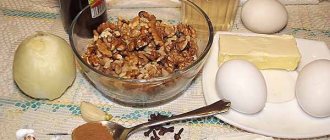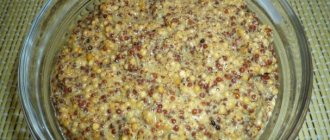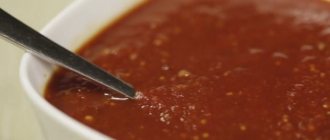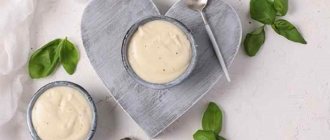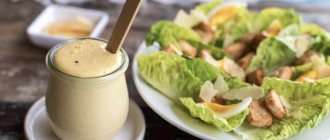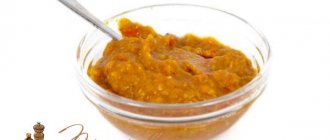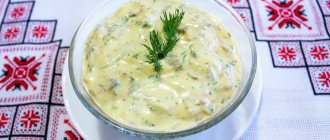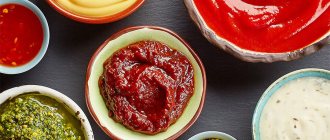Historical ode
Oyster sauce is an invention of enterprising representatives of China, who are accustomed to inventing the next Chinese masterpiece from the smallest set of products.
People who actively eat rice and fish have for centuries willingly gobbled up all sorts of sea creatures, diversifying their meager protein diet. Not only mussels, octopus, shrimp and squid were used, but also rarer oysters. Soups and noodles were especially popular in coastal restaurants.
Legend has it that at the end of the 19th century, the cook of one of the establishments in the south of the country cooked chowder with oysters. Several times, adding spices and seasonings, getting busy with numerous orders and forgetting about the soup, I came to my senses when it acquired an unsightly “burnt” appearance. Looking around in fear, he stuck his nose into the pan and was surprised at the aroma the thick liquid emitted. Delighted, he wrote down the recipe for the new dish.
Guests of the establishment enjoyed this wonderful addition to familiar dishes. Word of the sauce spread from the port city far beyond its borders. The smart Chinese registered the brand and, with the help of influential acquaintances, opened production.
Oyster sauce became famous in Europe primarily in France and England. But here the delicacy was prepared as bechamel in combination with oysters.
Nowadays, oyster sauce is produced not only in the Asian region, but also in the United States. The range of such sauces increases every year, numbering more than a hundred types.
In the CIS countries, oyster sauce appeared thanks to close trade contacts with the countries of the Asia-Pacific region. And it’s clear why - after all, their cuisine is very different from Slavic, arousing healthy interest among curious ordinary people.
Secrets of making oyster sauce
What is this exotic product made from? Everything here is quite complicated. The basis for preparation is fresh bivalve mollusks that live in the warm southern seas. The most famous for their quality are oysters caught at the mouths of large rivers, in areas of ebb and flow, where the waters contain the least amount of salt and high temperature. The most purchased edible breed for Europeans is the Norwegian wild one, followed by the Japanese one grown under artificial conditions. But the dominance in oyster production has long been established by the United States of America.
Luckily, we don't have to boil expensive shellfish to cook at home. It is enough to use ready-made oyster essence. We would like to warn you that you need to choose it with special care. An essence containing less than 30 percent of the extract is considered to be of low quality. It contains food chemical “Eshki”, for example: the notorious flavor enhancer beloved by the Chinese - monosodium glutamate, as well as potassium sorbate and sodium benzoate. But it will take just a few minutes to prepare.
To get closer to the original taste, you can add rice vodka (sake) or white wine, sugar (honey) to homemade oyster sauce, and ground pepper or pickled garlic (onion) for spiciness. It is better to add sea salt and store-bought soy sauce.
Contraindications and harms of oyster sauce
You should not try a new taste if you are allergic to seafood. The ingredient in the natural seasoning is boiled shellfish; the cheap analogue is oyster extract. Counterfeits also have a negative impact. To give the desired taste, potassium sorbate with a high allergenic hazard is used.
But even when there is no individual intolerance to seafood, eating disorders and allergies can appear due to the influence of E621, a favorite Chinese food additive. It has a direct effect on the part of the brain that stimulates appetite. If you do not meet the body's needs, you can provoke a disruption of the central nervous system. And increasing the portion size can cause obesity.
Abuse of oyster sauce can cause harm in people with a history of gastritis, peptic ulcers and erosive damage to the digestive tract, frequent heartburn. Most often, the culprit of negative effects on the gastrointestinal tract is the preservative E211, sodium benzoate.
An absolute contraindication to introducing oyster sauce into the daily menu is type 2 diabetes. Too much sugar in the composition. If you have type 1 diabetes, you should consult with your doctor about possible compensation for increased blood glucose with antidiabetic drugs.
What to eat with and what to replace oyster sauce with
It is considered correct to eat oysters fresh and raw. Oyster sauce has become an alternative to an expensive delicacy. Its use in various meat, fish, vegetable dishes, as well as as a dressing in salads, pasta, etc. enriched them. And as a marinade for meat and fish, it has no price!
In native penates it goes well with the sauce:
- traditional noodles;
- seafood first courses;
- salads;
- mushroom delights;
- baked and boiled fish;
- grilled pork, beef and poultry.
If you adapt it to our cuisine, it works well with buckwheat, rice and stewed eggplant.
Some gourmets replace the sauce with a mixture of soybean oil, vegetable broth, starch and spices. But once you try classic oyster sauce at least once, you will never forget its unique taste.
Oyster sauce - what is it and what is it eaten with?
How do you get it?
By simply pressing oyster meat, it is something like fresh shellfish. The extract is preserved in jars and distributed around the world in this form. Finding one in Moscow is not a problem; go to any culinary boutique. Initially, oyster sauce began to be produced in the Chinese province of Zhang Qin, then in neighboring Japan and Korea. There are nuances, but the taste is similar everywhere, salty-sweet. Asians love it very much, sometimes they even use it instead of salt - which means that the scope of application of the sauce is unusually wide, just like soy sauce. Ketchup is resting...
It is ideal to accompany them not with fish, but with meat dishes, especially pork. In second place is beef, followed by fish dishes and chicken. You will understand a lot about oyster sauce if I call it by the Russian word “gravy”. Asians cook meat and rice and eat them with this very gravy - it turns out to be “less than good”, but the main thing is that the rice is juicy and you can eat a lot of it. The sauce is always added at the very end of cooking, and it is always heat-treated. For something to be eaten somewhere with raw oyster sauce - like shish kebab with ketchup, for example - this does not happen. Heat treatment greatly enhances the taste of the sauce, although some of its properties, of course, are irretrievably lost.
Recipe for the most popular dish with oyster sauce - beef noodle soup
Take beef tenderloin, soft meat, cut across the grain into square pieces, slightly wider than the azu. Lightly marinate in sesame oil, Chinese rice wine, salt and pepper. “Marinate” is a strong word: in fact, we simply mix the meat with the above ingredients with our hands. And then immediately throw it into the deep fryer for 20 seconds. It turns out crusty on the outside, tender on the inside. Next, take rice noodles, preferably flat ones, and fry them in a small amount of oil in a hot frying pan so that they do not stick to the walls. The right frying pan is a wok, the right spatula is wooden. We fried it, added a little chicken broth, turned it off and did not remove it from the stove so that it cooled as slowly as possible. Now we prepare the dressing: throw garlic and ginger into the frying pan, fry them with the addition of chicken broth, pour in oyster sauce, thick dark soy sauce, Chinese wine and a drop of sesame oil. Add cornstarch to thicken, and then add beef, then remove from heat and place on noodles. The plate should be deep.
by https://www.rl-phuket.com/
Oyster sauce - what is it and what is it eaten with?
November 23, 2014
What is the value of the dish?
Of course, the question of benefits is not the last. Why do we need such an exotic? It turns out that this product has many useful properties. It contains:
- selenium, phosphorus, calcium, iodine, potassium, zinc, magnesium, copper, iron, fluorine;
- vitamins B, A, C, PP, nicotinic acid;
- omega-3 fatty acids;
- ceramides.
With their help, the body stabilizes the functioning of the nervous and cardiovascular systems, the gastrointestinal tract, improves immunity and resistance to cancer, and increases potency.
Excessive consumption of seafood only threatens those suffering from gout, because they contain a lot of protein compounds that turn into uric acid, and this is bad for the joints.
Oyster sauce is suitable for a diet, because it has virtually no calorie content (does not contain fat), but it contains a lot of protein and carbohydrates (due to the sugar content).
Now let's try to cook something close to the original at home with our own hands!
Benefits and harms
The benefits and harms of an oyster product come from its composition, which we discussed in detail above. Let's start by talking about the beneficial qualities of the dressing - with regular moderate consumption, you can extract the following positive properties:
- Removal of harmful cholesterol;
- Increased immunity;
- Normalization of metabolism;
- Improved appetite;
- Relieving stress and helping to get rid of depression;
- Normalization of the digestive system;
- Stimulation of brain function;
- Improving the functioning of the liver and blood vessels;
- Gives a boost of vivacity and energy.
Golden Dragon Oyster Sauce
For 0.5 kilos of fresh oysters we will need:
- dry white wine 1 glass;
- soy sauce 300 ml;
- starch 1.5 tbsp;
- onion 1 large head;
- natural honey 1 tbsp;
- vinegar 20 ml;
- ground black pepper to taste;
- about half a liter of water for cooking.
Cooking method:
- We wash the oysters we brought from the store. Take a napkin and place the sink in it. Using a special thin knife (medical scalpel) at the place where the valves close, we will make an incision in depth and draw it from the flat side in the middle, cutting the muscle that locks the valves. To make sure that the mollusk is alive, let's touch the dark line of the cilia. Body twitching will convince you of freshness.
- Peel and wash the onion, finely chop it, pour in vinegar for 5-7 minutes, i.e. Let's marinate. Salt the marinade.
- Place the oyster meat and pickled onions into the bowl of a multicooker-pressure cooker and add water so that it completely covers the prepared products. Set it to cook on the stewing program for 2 hours. Let's strain the resulting liquid.
- The broth should acquire a dark color and a sour smell. We will no longer need the meat, and we will set the essence aside to cool.
- Pour wine, soy sauce into a saucepan, add honey. Stirring, heat to 45-50°C (until the honey dissolves).
- Mix the wine-soy liquid with 2/3 parts of oyster extract over low heat. In the remaining third that has cooled to room temperature, stir the starch (without forming lumps). Stirring constantly, cook until thick jelly. Let's pepper it at the end. Let's mix everything.
- Place the finished sauce into jars with tight lids. Store in the refrigerator for no more than 5 days.
The recipe can be simplified by using store-bought oyster sauce.
Oyster sauce "Yellow Sea"
Let's prepare:
- 200 ml - oyster essence;
- 1 teaspoon - apple cider vinegar (can be 9% table);
- 4 level tablespoons of granulated sugar;
- 1 glass of water;
- 50 grams (heaped tablespoon) potato starch;
- salt at your discretion.
We create:
- First, cook the caramel: pour sugar into a stainless steel bowl, pour half a glass of water and vinegar. Cook over medium heat, stirring, until thickened and golden brown. If you overdo it, you risk getting bitter.
- Pour in the extractive essence, add some salt and heat over low heat.
- Dissolve the starch in the remaining cool water. Cook just enough to get the consistency of rich sour cream.
- Transfer the finished sauce to a clean container and use it chilled.
Oyster sauce: basic recipe
Let's try to prepare oyster sauce according to the basic recipe.
- 250 gr. fresh oysters;
- 650 ml soy sauce.
Wash the oysters thoroughly and boil them for a couple of minutes. A sign of readiness is the opening of the shells.
Advice! If after boiling you come across unopened shells, they should be thrown away; these oysters are spoiled.
Remove the shellfish from the shells and chop finely. Pour soy sauce over the chopped oysters and add about half a glass of the water in which the seafood was cooked. Place the sauce on the fire and simmer until its volume is reduced by 30%.
For cooking, you can use not only fresh, but also canned oysters. In this case, there is no need to boil them, you need to immediately chop them finely. Instead of oyster broth, add liquid from a can to soy sauce.
